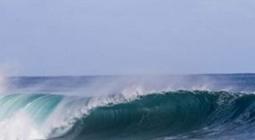‘Ecosystems are collapsing’: one of Australia’s longest rivers has lost more than half its water in one section, research shows
The Murrumbidgee River had 55% less water in 2018 than it did in 1988, with the Lowbidgee flood plain hardest hit
A section of one of Australia’s longest rivers, the Murrumbidgee, lost more than half of its water over a 30-year period due to dams and other diversions, according to new research.
Scientists at the University of New South Wales examined the impacts of dam infrastructure and irrigation on natural water flows in the lower Murrumbidgee River since 1890.
Research published in the Journal of Environmental Management found that these diversions, as well as increased water use by the city of Canberra, reduced water flows at Hay, in south-western NSW, by 43% from 1958 to 2018. In the 30 years from 1988 to 2018, the reductions were more pronounced at 55%.
The researchers said the most severe impacts from the decline in water flows were on the Lowbidgee flood plain, the river’s largest wetland, which depends on regular flooding to thrive.
“The Lowbidgee Floodplain depends on regular inundation,” said Jan Kreibich, a PhD candidate at UNSW who led the study. “Without it, entire ecosystems are collapsing.”
To make their findings, the scientists used natural flow and rainfall data from the early 1900s before dams were constructed and other infrastructure and irrigation affected water flows.
A simulation model determined what the natural flow would have been over 100 years up to today without dams and other disturbances caused by human activities, and researchers compared those figures to the actual flow data.
The researchers also found the period of time between major overbank flows – the flooding that sustains the wetlands – had more than doubled, from once every two years to once every 4.4 years.
They also found that climate breakdown could reduce river flows by a further 7% to 10% from 2047 to 2075.
“The overall message is that there’s talk about the impact of climate change and it will be an added impact,” said Prof Richard Kingsford, director of the UNSW’s Centre for Ecosystem Science and a co-author of the paper.
“But we can’t forget just how affected this river system is by the diversion of water for irrigation and Canberra.”
He said the findings showed environmental flows were “a fraction of what they used to be” and highlighted the need for governments to use water policy to “protect the environmental flows we’ve got”.
Bradley Clarke-Wood, the wetland birds coordinator at BirdLife Australia, said the findings reflected what conservationists had seen on the ground.
“As a part of our regular waterbird monitoring, we have seen declines in the abundance of key wetland species as a result of reduced wetland inundation,” he said.
He said waterbirds relied on wetlands for reproduction – and the success of that reproduction was dependent on the amount of water and the duration of flood events.
“Any reduction in that means the next generation of birds are under a lot of pressure and have limited capacity for success,” he said.
The Australian Conservation Foundation’s Dr Paul Sinclair said the research “again sounds the alarm for federal and Murray Darling Basin state governments to accelerate action to tackle the twin crises of climate pollution and unsustainable flow regimes”.
“Rivers like the Murrumbidgee die if they lose connection to their floodplain,” he said. “Federal and state governments need to get on with the job of making sure there’s enough water in rivers to keep them connected to floodplains and able to survive deeper and more frequent dry conditions caused by global heating.”
Cover photo: Researchers examined the impacts of dam infrastructure and irrigation on natural water flows at Hay in south-western NSW. Photograph: Oliver Strewe/Getty Images






